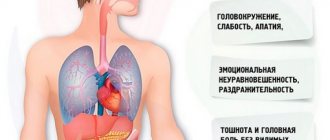What is Rett syndrome
Rett syndrome is a progressive neurodegenerative disease that affects a child's brain development and cognition. Over time, it can cause severe problems with speech and communication, lack of coordination and muscle control, involuntary arm movements, and slowed growth.
The syndrome was first discovered in 1966 by Andreas Rhett, an Austrian pediatric neurologist. Rett syndrome is a rare but severe brain disorder that affects only one in 12,000 girls.
Rett syndrome almost always affects girls, although boys can be affected in very rare cases. Babies born with Rett syndrome develop like normal babies during the first few months of their lives. They correspond to typical developmental milestones such as making eye contact, interacting with parents, and grasping objects. However, between 6 and 18 months, children with Rett syndrome begin to lose previously acquired skills, lose interest in play, and often become increasingly irritable.
As children with Rett syndrome grow, they begin to develop problems with communication and muscle control, leading to difficulty with movements such as walking. They may have problems breathing, feeding and swallowing, and may have seizures and sleep disturbances. The majority of sick children are diagnosed with intellectual retardation.
The current approach to treating Rett syndrome focuses on symptomatic treatment, improving movement and communication, and supporting patients and their families. There is currently no cure for this disease. Scientists all over the world are studying and researching the pathogenesis of this disease in order to find that very cherished cure.
In terms of prevalence in the world, this disease is among the rare ones with similar symptoms, immediately after Down syndrome. In Russia, according to some sources, there are slightly more than a hundred girls with Rett syndrome, according to others - 25% of the total number of children. The statistics are lame and here's another reason: Rett syndrome is often confused with cerebral palsy or autism.
It is important to understand that although girls and women with Rett syndrome may have difficulty communicating, they have a full range of emotions and understand more than they can express.
Diagnosis and treatment
The fundamental symptom of Rett syndrome is the specific clinical picture of the pathology. Research criteria have been developed, which are divided into the following groups:
- Necessary. If all conditions are necessarily present, the classic type of disease is diagnosed, and the gender of the child is not taken into account, since boys will have to be excluded from the category of patients.
- Additional. Signs may be present, but their manifestations are not required.
- Exclusive. Even one of these criteria can refute the diagnosis.
The criteria are presented in the table
| Required | Additional | Exclusive |
| The normal course of pregnancy and the condition of the fetus in the prenatal period. Head circumference is normal at birth with subsequent slowdown in growth rates. Loss of hand movements and eye contact, communication; delayed psychomotor development and profound speech impairment. Stereotypes and coordination disorders, difficulties in planning actions, gait disturbance | Breathing disorders: apnea during wakefulness, rapid and forced breathing, swallowing air, and drooling. Electroencephalographic pathologies and epileptic seizures. Spasticity of skeletal muscles, accompanied by atrophy or dystonia. Vasomotor disorders of peripheral parts. Curvature of the spine (scoliosis), short stature, deformed feet | Fetal growth retardation during pregnancy and congenital microcephaly. Birth trauma to the brain and neurological diseases due to an infectious process or injury. Organ enlargement, retinal damage or optic disc atrophy |
Some people with Rett syndrome may have different symptoms. If the main signs are necessarily present, such cases are classified as atypical or incomplete manifestations of the pathology; the course is typical for a mild degree of the disease.
Instrumental diagnostic methods allow you to confirm the diagnosis and identify changes in the body:
- Computed tomography and magnetic resonance imaging indicate subatrophy of the cerebral cortex, circulatory disorders and morphological changes in the structures of the organ.
- An electroencephalogram reveals abnormalities in brain function, epileptiform activity, slowing of the background rhythm and increased amplitude.
- An ultrasound examination helps determine the underdevelopment of certain organs.
- X-rays reveal deformation of the spine and shortening of the bones of the feet.
The doctor receives basic information from a genetic analysis, which indicates a gene mutation.
Causes of the syndrome
The syndrome is caused by mutations in the MECP2 gene on the X chromosome, one of the two chromosomes that determine a person's sex. Girls have two X chromosomes, while boys have one X and one Y chromosome. Rett syndrome is most often diagnosed in girls because they have a second copy of the MECP2 gene that is able to work correctly and the child survives.
Due to the lack of a copy of the MECP2 gene in boys, when it is mutated on the only X chromosome, such children either die in utero or become very sick. In most cases, Rett syndrome is not inherited (it is not passed from parent to child). The probability of illness in subsequent children of parents who have one affected child is approximately 1%.
To date, more than 200 MECP2 gene mutations associated with Rett syndrome have been identified. During normal human development, the MECP2 gene helps create a protein (Methyl-CpG binding protein 2) that regulates the activity of other genes in the body. When protein levels change due to a defective gene, it causes other genes in the body to change, which ultimately affects normal brain development.
Children with the disorder may exhibit a wide range of symptoms. This may be influenced by the location, type and severity of the gene mutation, and there may be other factors. More research is needed to better understand the MECP2 gene and how it affects various body functions.
When to see a doctor
If you suspect Rett syndrome, it is recommended to consult a doctor. The disease is under the purview of a neurologist. The specialist interviews parents about symptoms. Then it measures important indicators (blood pressure, temperature, pulse). Additionally, pay attention to head circumference, height, and body weight. Next, the doctor examines the child’s entire body.
At the clinic you can contact a pediatrician - a specialist who deals with the prevention, diagnosis and treatment of diseases in children under 18 years of age. The doctor will examine the child. If necessary, a referral to the required specialist is issued.
Symptoms
Symptoms can vary greatly. Although the genetic change that causes Rett syndrome is present before birth, in most cases a child with Rett syndrome will grow and develop normally during the first 6 to 18 months of life before symptoms appear.
Main features
Initial symptoms of Rett syndrome may include the following:
- Developmental delay.
- Loss of eye contact.
- Lack of interest in games and communication.
- Slower head growth leading to microcephaly.
- Increased irritability.
- Decreased muscle tone (hypotonia).
As affected children grow, they may lose skills they have already learned, such as speaking and the ability to use their hands for activities such as eating. Children with Rett syndrome may show less interest in people and objects they have used. Most children with the disorder begin to exhibit classic Rett syndrome movements between the ages of 1 and 4 years.
These may include squeezing, rubbing, twisting, flapping, and repetitive hand-to-mouth movements. As the disorder progresses, children will find it increasingly difficult to control their muscles to make coordinated motor movements. This neurological condition is also called apraxia or dyspraxia.
Some children with Rett syndrome can walk and maintain this ability, others may eventually lose this ability, while some may never walk independently.
Additional signs
Additional symptoms of Rett syndrome may include the following:
- Childhood apraxia of speech, in which the child's brain has difficulty coordinating the movements of the articulation muscles needed to form syllables and words.
- Involuntary muscle contractions causing repetitive movements.
- Muscle weakness, joint contractures and spasticity.
- Scoliosis.
- Symptoms similar to those observed in Parkinson's disease, such as tremors, decreased facial expressions.
- Sleep disorders, including difficulty falling asleep.
- Abnormal breathing, which includes breathing too fast, too slow, and gasping for air.
- Problems with eating and swallowing.
- Gastrointestinal problems including reflux and constipation.
- Panic attacks or anxiety attacks.
- Autism-like disorders.
- Poor growth and difficulty gaining weight.
After initial regression, development tends to stabilize in most girls. Some skills (lack of interest in communication) may improve, while others (motor skills) may remain the same or gradually worsen. Other symptoms, such as breathing abnormalities or seizures, may come and go over time.
Despite their many problems, children with Rett syndrome have their own unique personality, with likes and dislikes similar to normal children.
Diagnosis
Rett syndrome requires a whole range of diagnostic measures. First of all, the pediatric neurologist should:
- review the patient’s medical history to identify concomitant pathologies that may aggravate the course of the disease;
- collect and analyze life history, including studying information about the intrauterine development of the fetus and the course of pregnancy in women;
- conduct a thorough neurological examination - this should include assessment of motor and speech skills, gait and motor skills.
In addition, head circumference measurement is required; interview the patient’s parents in detail to establish the severity of symptoms, which will indicate the phase and nature of the course of the disease.
The most informative instrumental examinations are:
- MRI of the brain;
- electroencephalogram;
- Ultrasound of internal organs.
- The most accurate diagnostic information is provided by the methods of modern genetics, which makes it possible to make the correct diagnosis in the prenatal period, i.e. during the intrauterine development of the fetus.
Stages of the disease
- Initial stage: from 6 to 18 months. At this stage, the first symptoms of the syndrome may appear. There is a lack of interest in toys. Development of motor skills may be slow. Head circumference growth slows down.
- Stage 2: from 1 to 4 years. The biggest changes occur during this stage, often rapid, although they can be gradual. The child becomes very irritable. Repetitive hand movements become apparent and purposeful hand movements are lost. Head circumference growth slows down. Breathing problems may occur.
- Stage 3: from 2 to 10 years. At this stage, the rapid regression of the second stage slows down, and improvements in behavior and irritability may decrease. Movement control deteriorates. Loss of muscle tone becomes pronounced. Epileptic seizures may begin.
- Stage 4: 10+ years. This stage is characterized by loss of movement. The ability to walk is lost. Scoliosis may develop. Communication and intelligence remain at the same level. Repetitive hand movements may become less frequent.
How the disease develops
Rett syndrome in children is a rather insidious disease. At birth, it practically does not manifest itself. Its first symptoms appear within 6 months. up to one and a half years. However, there are still some barely noticeable signs in the first half of the year. But they are so insignificant that they do not attract attention.
This is what the mother of one of the girls with the syndrome says about the first half of her life. She attached importance to these little things only after 1 year and 7 months had passed since the birth of her daughter, when the manifestations had already become obvious. Among the harbingers of the disease, she noted that her baby began to hold her head at 3 months, and not at 2, as expected. At 6 months she could not sit yet, and she began to walk only at 1 year and 4 months. She developed normally psychologically, and began to speak early, but these were not the standard words “mom”, “dad”, but “bunny”, “bear”, etc.
At 1 year and 7 months. she stopped recognizing her parents and did not seem to need them. I spent the whole day doing one monotonous activity: throwing a ball or pushing a stroller. She walked in circles for hours until she was stopped or she stammered. This stereotypical behavior is called field behavior, when the action drags on the patient and he cannot do anything.
At the age of four, epileptoid seizures joined the symptoms. However, upon reaching school age, the girl was home-schooled and made some progress.
12–6 years – this was a period of remission, when the disease practically did not bother me. But from the age of 16, new, deeper problems appeared related to bone deformations and diseases of the internal organs. One of the girl’s legs was almost 10 cm shorter than the other, which could not but interfere with walking. At 20 years old, she weighed only 24 kg and was 158 cm tall.
Typically, SR occurs in 4 stages.
The first stage , which, as a rule, starts from 6 months to one and a half years, is manifested by an increase in irritability and lability of mood in the child. Episodes of crying and psychomotor agitation are replaced by increasing passivity. The baby moves aimlessly around the room and loses interest in toys. But contact with the mother remains.
This is how a woman describes her daughter’s behavior at the beginning of the disease: she screamed all day long without stopping, banged her head against the walls, and could not sleep. No matter what we did, she did not calm down. It was real hell. But what was more depressing was that not a single doctor could make a clear diagnosis.
A disproportion of the head and limbs in relation to the body develops. They become disproportionately small. Growth slows and muscle tone decreases.
The second stage , which lasts several years, is characterized by a variety of symptoms. A decrease in intellectual abilities immediately attracts attention, and mental dementia develops. Almost all acquired skills regress. Speech completely disappears or progresses to the level of echolalia - mechanical repetition of what was heard.
Acquired motor skills and object-role behavior are lost and replaced by motor stereotypes. A characteristic symptom: numerous repetitive movements reminiscent of hand washing. In addition, the child constantly wrings or rubs them, waves them, and claps his hands. Clenching of the fingers is quite normal at 4 months, but at a later age it indicates a stoppage of development. The baby loses his grasp reflex and is unable to make rotational movements with his hands.
Gradually, physical activity fades away. The gait is disturbed, the child walks without bending his knees.
The third stage lasts 10 years or more, and is characterized by the development of persistent, profound dementia, even idiocy. There is a complete loss of the ability to speak and understand speech addressed to the child. A tremor of the whole body appears, aggravating movements. Convulsive seizures intensify.
The fourth, final stage is a period of worsening of previously manifested symptoms. Persistent loss of mental abilities, motor skills, development of muscular dystrophies leading to complete immobility.
The life expectancy of such patients on average ranges up to 30 years, although there are cases when they lived up to 50 years of age.
Diagnosis of Rett syndrome
There are problems with early diagnosis, because not all pediatricians are familiar with the first symptoms of this disease. Very often the diagnosis is made late. Diagnosis usually begins with identifying the characteristic symptoms of the disease, as well as collecting a medical history and physical examination.
Diagnostics may include the following procedures.
- Genetic testing to detect MECP2 gene mutations to confirm clinical diagnosis
- Neurological tests such as an electroencephalogram (EEG), which evaluates electrical activity in the brain and can detect the presence of seizures.
- Pulmonary function tests and cardiac function tests, including electrocardiography (ECG), to determine how well the baby's lungs and heart are working.
Depending on the symptoms found in your child, additional tests may be needed to identify any problems with eating and swallowing, gastrointestinal problems, or other medical problems that may arise.
Statistics
Rett syndrome is essentially a genetic pathology that is believed to be hereditary. To more accurately investigate the causes, a territorial analysis of the distribution of the syndrome was carried out, which revealed a special frequency of cases of Rett pathology in children from one small locality. Such “foci” were noted in Hungary, Norway and Italy.
The statistics of the syndrome are quite high. For every 10-15 thousand children, one female child is born with the described Rett pathology. In the mid-twentieth century, the Austrian scientist, after whom the syndrome is named, analyzed and symptomatically treated more than 30 cases. All patients were girls. In boys, Rett syndrome is incompatible with life and is extremely rare.
Treatment of Rett syndrome
There is currently no specific treatment for Rett syndrome. Treatment for children with the disorder is complex and varied and must be tailored to meet the child's specific needs.
Treatment for children with Rett syndrome often includes the following procedures.
- Physiotherapy.
- Speech therapy.
- Rehabilitation and behavioral therapy.
- Special educational support.
- Psychosocial support for the child and family.
- Nutritional support in the form of supplements, specialized diets. A high-calorie diet is prescribed to help maintain adequate weight, with the use of a feeding tube and other feeding aids if necessary.
Antiepileptic therapy is prescribed to treat certain symptoms, such as seizures.
Children with Rett syndrome are also at increased risk of developing scoliosis and cardiac arrhythmias, both of which may require additional treatment. Beta blockers are prescribed or a pacemaker is used to control the heart rate.
If scoliosis becomes severe, bracing and spinal surgery are used to prevent further development of the spinal curvature
It turned out that therapeutic horse riding, swimming, dolphin therapy, hydrotherapy and music therapy have a beneficial effect on the course of the disease.
It is important to constantly perform physical activity, classes with a speech therapist, psychologist, and speech pathologist. If you don’t do physical exercises with your child, don’t do massage, exercise therapy, then he becomes recumbent and quickly loses all acquired skills.
Rehabilitation of a sick child: what to do with your baby to improve his condition
In addition to drug therapy, rehabilitation measures are very important. The main goal of such activities with a child is to improve his quality of life. This task can only be accomplished through close cooperation between parents and specialists.
Physical education and massage
Therapeutic exercise and massage are the best ways to correct movement disorders. The exercises are aimed at supporting the range of motion in the limbs, the ability to preserve walking skills as much as possible, and strengthening the muscle corset to prevent spinal curvature. In some cases, orthopedic correction is used, including surgery, if the child has severe bone deformities.
Video - rehabilitation measures, physical therapy
Treatment by an osteopath, psychologist and defectologist, music therapy (Tomatis method)
Treatment by an osteopath, in particular manual therapy, in combination with other rehabilitation methods can have a good effect.
Classes with a psychologist and speech pathologist are required. Psychological rehabilitation is aimed at maximizing the development of the remnants of communication and motor skills, and at the formation of a specific “language of communication” based on them.
To rehabilitate a child with Rett syndrome, sessions with a psychologist are required.
Music therapy is very widely used, which calms patients and partially compensates for impaired interaction with the outside world.
Music serves as a motivator for communication between patients and people around them, and develops sensory, emotional, and cognitive skills.
The Tomatis method is used, which consists of listening to classical music processed with special filters. The method improves the brain's ability to perceive and correctly process sound information. The filters of the special device used to conduct classes are configured individually for each child. Tomatis therapy is contraindicated in case of epileptic activity.
Video: rehabilitation of a child with Rett syndrome at home
Other correction methods
Other techniques are also used to correct the symptoms of the disease:
- ABA therapy is a training program based on the study of behavioral factors and intensive influence on the behavior of a sick child. The essence of therapy is that all complex actions and skills are broken down into small blocks. Each such block is separately memorized with the child until it becomes automatic, and then all actions are assembled into a single complex chain. At the same time, the ABA therapist strictly controls the patient, not allowing him to deviate from the assigned activity;
- Lessons with specially trained animals—horses (hypotherapy), dogs (canistherapy) and dolphins (dolphin therapy)—have a good effect. An individual lesson program is drawn up for each child;
- hydrorehabilitation includes hydromassage and swimming, as well as special exercises in the aquatic environment;
- art therapy is treatment through drawing and creativity. This therapy helps improve communication skills, reduce emotional behavior, normalize mental state, and regulate fine motor skills.
Hypotherapy is one of the effective methods of rehabilitation of a child with Rett syndrome
Despite the difficulties in interacting with a sick baby, parents should strive to involve him in society and help establish communication links with the outside world.
Nutritional Features
Feeding a sick child presents certain difficulties. Many girls experience increased salivation and poor oral health, so feeding them is a real problem. Some children have a good appetite and enjoy eating their favorite foods. But they all eat very slowly; the process of eating can last up to an hour and a half. As for drinking, almost half of sick babies have difficulties with swallowing, which are manifested by choking, coughing and can threaten liquid getting into the respiratory tract.
Children with Rett syndrome have difficulty chewing food containing coarse fiber (meat, raw vegetables, fruits), so it must be crushed and given as a puree. It is better to offer side dishes in small pieces or mashed. During feeding, you need to make sure that the baby's head is at the correct angle and does not fall back.
It is better to give food containing coarse fibers to a sick child in a ground form.
Many children suffer from nausea and often refuse to eat, so it can be very difficult to feed them; such babies quickly lose weight. Therefore, food should be enriched with proteins and fats, sufficiently high in calories and fortified. It is recommended to feed the child in small portions and often (every 3 hours) so as not to overload the digestive system. Young children are given fortified milk or formula.
In some cases, when the process of absorbing food becomes too problematic and painful, it makes sense to feed the child through a tube with special nutritional mixtures. This option can significantly improve the baby’s quality of life and can become a real salvation for him.
Forecast
The outlook for children with Rett syndrome varies, depending largely on the progression and severity of symptoms. Although children with Rett syndrome need help with most daily activities, many can learn some independent skills, such as eating or going to the toilet. Although communication is usually limited, many girls can learn to communicate in other ways, such as using additional communication devices.
With support, people with Rett syndrome can live into middle age. However, due to the conditions and health complications associated with the disease, people with Rett syndrome typically have a shorter life expectancy than the average population. Some people die at a fairly young age as a result of complications such as heart rhythm abnormalities, pneumonia and epilepsy.
Life expectancy largely depends on rehabilitation. Early rehabilitation has the potential to improve the condition.
General characteristics
The disorder was identified by Dr. Andreas Rhett, an Austrian physician, who first described it in a paper published in 1966. 1 The disorder was only widely recognized after the publication of a second paper in 1983. 2
The evolution of Rett syndrome, including age of onset and severity of symptoms, varies from child to child. However, before symptoms begin, the baby appears to be growing and developing normally. Mental and physical symptoms appear gradually.
Early signs
Hypotonia (loss of muscle tone) is usually the first symptom.
As the syndrome progresses, the child loses voluntary use of hands and speech. Other early symptoms include problems crawling and walking and decreased eye contact.
Loss of functional use of the hands is accompanied by compulsive movements such as rubbing and washing. The onset of the regression period occurs suddenly.
Another symptom, apraxia, the inability to perform motor functions, is the most debilitating feature of Rett syndrome. Apraxia interferes with all body movements, including fixation of gaze and speech.
Individuals with Rett syndrome often exhibit autistic behavior in the early stages. Other symptoms include:
- walking on your toes,
- sleep problems;
- walking with a wide base of support (very separate legs);
- grinding, gnashing of teeth,
- difficulty chewing;
- delayed growth;
- convulsions;
- cognitive impairment (learning, intelligence),
- breathing difficulties upon awakening, such as hyperventilation, apnea (stopping breathing), swallowing air.









